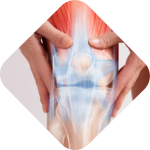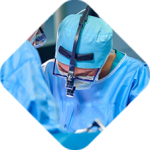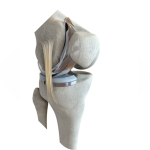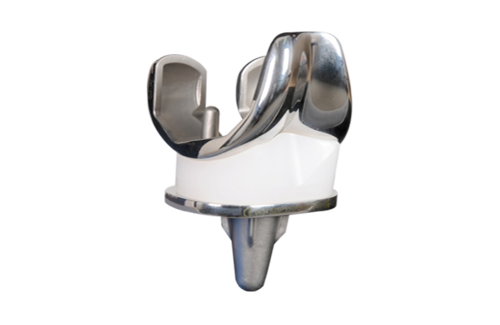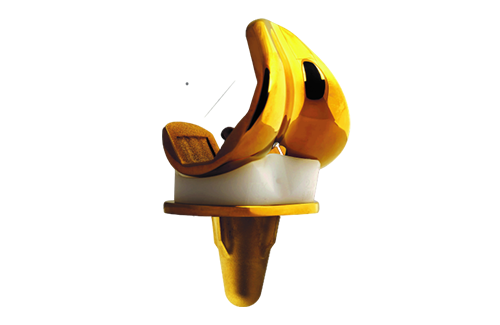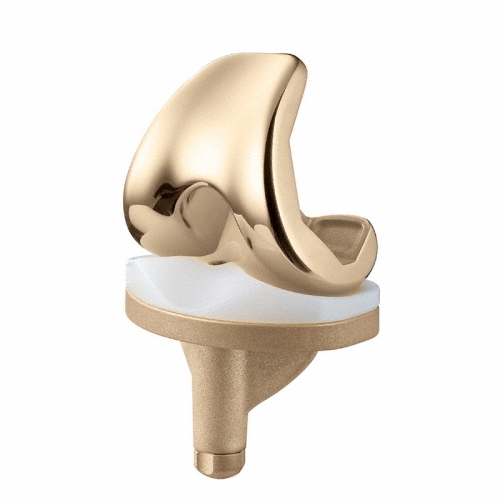
Knee Replacement
• Zimmer Implant
• OPD/ Investigation Free
Single Knee Replacement @95,000/-
Both Knee Replacement @1,85,000/-
KNEE REPLACEMENT SURGERY
Knee replacement surgery or knee arthroplasty is a surgery that can help reduce pain and improve function in damaged knee joints. This procedure is done by cutting and removing the damaged bone and cartilage from the shin bone, thigh bone and kneecap and replacing it with prosthesis (artificial joint) made of metal alloys and high-grade plastics. This revolutionary procedure provides pain relief, improved mobility and a better quality of life to the patients. One of the most successful procedures in medicine is total knee replacement.
PROCEDURE
A typical knee replacement procedure involves four basic steps: The bone is prepared for the surgery by removing the damaged cartilage ends of the thigh bone (femur) and shin bone (tibia). Metal components are either press-fitted or cemented to replace the removed bone & cartilage. This helps to recreate the surface of the joint. The kneecap or patella is cut and resurfaced using a plastic component. This might or might not be done depending on the damage to the patella. In order to create a smooth sliding surface and avoid any friction, a medical-grade plastic spacer is placed between the metal parts.
RECOVERY
The patient is discharged after 1 to 2 days after the surgery. Longer stay might be needed for complicated cases. The patient is able to get back to their normal daily activities within 6 weeks post surgery. However it may take 4 to 6 months to almost an entire year to get complete recovery and reaping the benefits of the surgery. A physiotherapy is usually recommended once the patient is discharged in order to gain a complete and smooth functioning of the joint. A physiotherapist will teach the patient following exercises: Exercises to strengthen knee muscles. Exercises to improve the range of motion of the joint and reduce scar tissue. How to use assistive walking devices, such as a walker and cane.
IS KNEE REPLACEMENT FOR YOU?
The patient is discharged after 1 to 2 days after the surgery. Longer stay might be needed for complicated cases. The patient is able to get back to their normal daily activities within 6 weeks post surgery. However it may take 4 to 6 months to almost an entire year to get complete recovery and reaping the benefits of the surgery. A physiotherapy is usually recommended once the patient is discharged in order to gain a complete and smooth functioning of the joint. A physiotherapist will teach the patient following exercises: Exercises to strengthen knee muscles. Exercises to improve the range of motion of the joint and reduce scar tissue. How to use assistive walking devices, such as a walker and cane.
Meet Our Experts


Dr. Harmandeep Singh
Associate Director - Orthopaedics
Why SPS Hospitals?
SPS Institute of Orthopaedics offers a complete range of diagnostic, therapeutic and surgical orthopaedic services. It is a super-specialty Institute which aims to provide world-class, evidence-based treatment for various orthopedic disorders and sports injuries. The combination of clinical acumen and cutting edge technology provides the highest level of specialized services to our patients. Our team of internationally trained, highly competent and dedicated orthopaedics surgeons is skilled extensively in their respective fields.
With our dictum of “early mobilization with minimal discomfort”, we provide a comprehensive range of treatment for patients undergoing different forms of orthopaedic surgery.

About Knee Replacement Implants
Implants are made of metal alloys, ceramic material, and strong plastic parts. Up to three bone surfaces may be replaced in a total knee replacement:
- The lower end of the femur. The metal femoral component curves around the end of the femur (thighbone). It is grooved so the kneecap can move up and down smoothly against the bone as the knee bends and straightens.
- The top surface of the tibia (shinbone). The tibial component is typically a flat metal platform with a cushion of strong, durable plastic, called polyethylene. Some designs do not have the metal portion, and instead, the polyethylene attaches directly to the bone. For additional stability, the metal portion of the component may have a stem that inserts into the center of the tibia bone.
- The back surface of the patella. The patellar component is a dome-shaped piece of polyethylene that duplicates the shape of the patella (kneecap). In some cases, the patella does not need to be resurfaced.
Components are designed so that metal always interfaces with plastic, which provides for smoother movement and results in less wear of the implant.
Register For Your Knee Replacement Surgery
Hear From Our Experts
Orthopedics Blogs
FAQS
Artificial knee implants consist of metal and medical-grade plastic called polyethylene. There are two ways of attaching the components to the bone. One is to use bone cement, which usually takes about 10 minutes to set. The other is a cement-free approach, in which the components have a porous coating that allows the bone to grow onto it. In some cases, a surgeon may use both techniques during the same operation.
There will definitely be some pain after your operation but your surgery team will do everything possible to keep it manageable and minimal. You may receive a nerve block prior to your operation and your surgeon may also use a long-acting local anesthetic during the procedure to help with pain relief after the procedure. Your doctor will prescribe medication to help you manage the pain. You may receive this intravenously (IV) immediately after surgery. When you leave the hospital, the doctor will give you pain relief medication as pills or tablets. After you recover from surgery, your knee should be significantly less painful than it was before.
According to research, more than 82 percent of total knee replacements are still functioning 25 years later. However, wear and tear can adversely affect its performance and lifespan.
After surgery, you will notice discolored skin, some swelling and drainage around your incision. This is normal. If you experience painful redness, abnormal swelling or thick, bad smelling drainage from your incision, you might have an infection. A temperature over 101°F also could indicate an infection.
Taking antibiotics is a precaution to help ensure that your new artificial joint does not become infected. Additional surgeries or dental work increases the chances of infection. No matter where the infection starts, if it spreads to your new knee, the results could be very serious. When artificial joints become infected, they must be removed surgically and then replaced. Please let your dentist or physician know that you’ve had joint replacement surgery. This is important no matter how small or straightforward the procedure.

